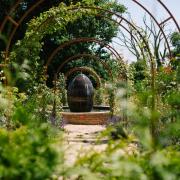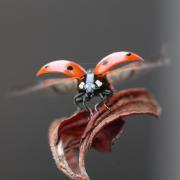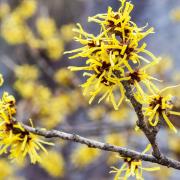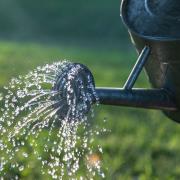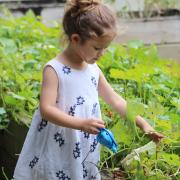Onions are a staple of any kitchen garden and growing them from seed means you can choose a variety right for your taste and pocket
Growing onions from sets has never agreed with me. I find that the tiny bulbs are much too expensive for my frugal approach to gardening, and the varieties I want to grow are seldom available as sets. Consequently, I have been growing onions from seeds for as long as I have been gardening.
Direct sowing
One way to start onions is by sowing the seed directly into the ground where the bulbs are to grow. Leave 30cm between rows, and thinly sow the seed about 1cm deep from late February to early April. To speed up germination, heat the soil by covering it with cloches, sheets of clear polythene or fleece.
Once germination is complete, thin the seedlings out, leaving about five per 30cm of row. This gives medium-sized bulbs that are ideal for the kitchen. If you’re after larger onions, then leave up to 10cm between seedlings.
Growing from transplants
Growing onions from transplants is another – and more efficient way – of establishing a crop. Compared to direct seeding, the production of transplants uses less seed, saves one or two weeding sessions and, with the use of a tunnel or greenhouse, gives plants a head start.
The first step is to sow seeds into the cells of compost-filled module trays. With good quality seed, sowing about six seeds in each cell should produce four or five seedlings, which is just about the right number.
Early sowings – from the end of January to February – can be made in an unheated greenhouse or tunnel. Later ones – up to the beginning of April – can be done either outdoors or undercover. Because of the small amount of compost in each of the cells, nutrient levels quickly run down. A shot of liquid feed four weeks or so after sowing will compensate for any deficiencies.
When the seedlings are about 10cm tall, their roots should have filled the cells, and they are ready for transplanting. Carefully remove each clump of seedlings from the tray, and transplant into a well-prepared soil. Don’t separate the individual plants – they will find their own space as they grow to full size. For medium-sized bulbs, leave 30-38cm between rows and 25cm between clumps in a row.
To reduce the need for weeding, you can transplant the seedlings into holes cut in a sheet of black plastic laid over the ground. You will only have to clean up the holes two or three times before the onions get big enough to force out the weeds.
Harvesting, drying and storing
Once the seedlings become established, just leave them alone – onions need little care as they grow. The bulbs are ready to harvest when the leaves on the majority of plants have fallen over, and at this point – usually in August – they should be lifted from the soil with a fork and dried.
Drying can be done outdoors if the weather is warm and it doesn’t rain. Lay the bulbs out for a week or more on a sheet of plastic or upturned boxes, turning them occasionally to expose all the surfaces to the sun. Alternatively, the onions can be left in a greenhouse or tunnel, where it is drier and warmer. Drying is complete when the necks of the bulbs have shrivelled, the roots have shrunken and turned brown, and the leaves crinkle like paper. Occasionally, a few thick-necked bulbs will not dry out ompletely, and these should be eaten immediately since they won’t keep.
Onions should be stored under cover in a dry environment – a shed or garage will do, especially if it is draughty. The bulbs can be plaited and hung up, or laid out in a double layer in a slatted tray – plastic mushroom boxes are perfect. The bulbs have a low freezing point and so will tolerate some frost. New leaves sprouting from the bulbs signal the end of the crop, and the bulbs should be eaten as quickly as possible once this has started. Storage life varies from variety to variety, though most will keep at least until March.
Pests & Diseases
Crop rotations are essential for keeping diseases and pests in check. Allow at least three years between allium (onion) crops, more if you can manage. Rabbits, slugs and snails can’t resist eating the leaves, and remedial measures must be taken to control them. Mildew can attack leaves in wet summers, though wider row spacings could help limit the problem.
Best varieties
British seed catalogues offer dozens of onion varieties that suit a range of culinary and gardening needs. A few to consider include the following:
• Ailsa Craig: A heritage variety producing large, sweet bulbs. Unfortunately, it has a short storage life.
• Red Baron: Produces red bulbs that are smashing in mixed salads.
• Santero: A modern hybrid that is purportedly resistant to mildew.
***
READ ON
• Looking after your garden during winter - Award-winning gardener Neil Lucas reveals his ideal recipe for bringing colour, fragrance and interest into your garden even in the darkest days of winter
• Top tips on getting the best flavour from your vegetable plot - Thoughtful growing, harvesting and storing can yield the ultimate flavour sensation in your vegetable plot
• Sensational Sandbanks property wins major international design award - A sensational Sandbanks property has just won a major international design award. Woadden Nash, the Poole-based company who created this award-winning family home, gives us an exclusive through the keyhole tour






